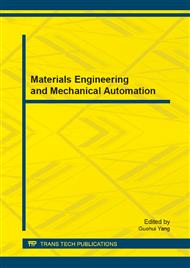p.526
p.532
p.538
p.544
p.549
p.556
p.562
p.571
p.577
A Mix-Integer Programming Model for Inventory Slab Allocation Problem
Abstract:
This paper investigates the inventory slab allocation problem in the iron and steel production. Considering some practical production factors including allocation quality, slab and order preferences, and the order-fulfill situation, we formulate the problem as a mix-integer programming model to allocate inventory slabs to the orders so as to maximize material utilization rate and customer satisfaction. Our objectives are minimizing the suitability cost concerning the allocation of slabs to orders and the cost associating with the unfulfilled or exceeded weight for each order, as well as maximizing the profit in terms of the allocated slab weight and the preferences of orders and slabs. Computational results using real-world data collected from the company show that the solutions generated by MILP are optimal.
Info:
Periodical:
Pages:
549-555
Citation:
Online since:
October 2013
Authors:
Price:
Сopyright:
© 2014 Trans Tech Publications Ltd. All Rights Reserved
Share:
Citation:


